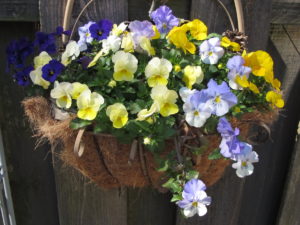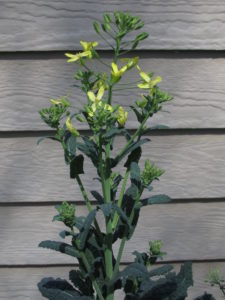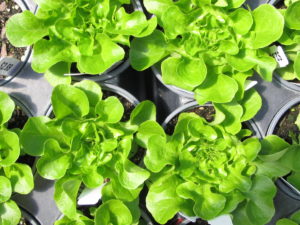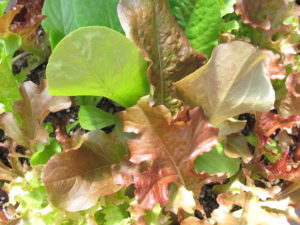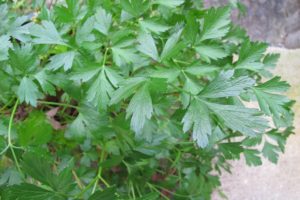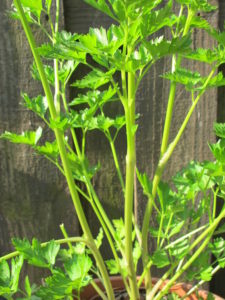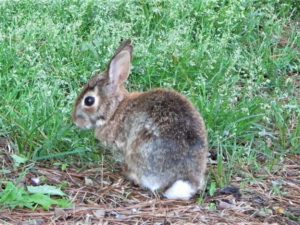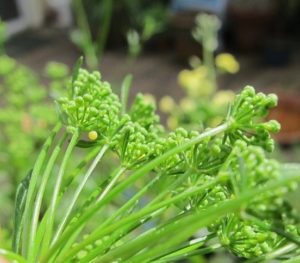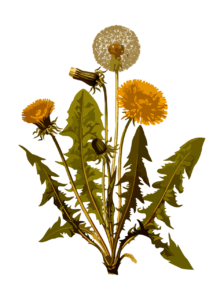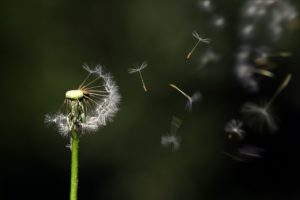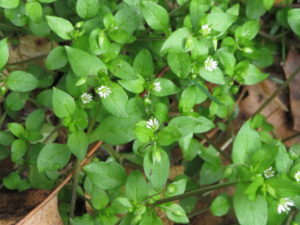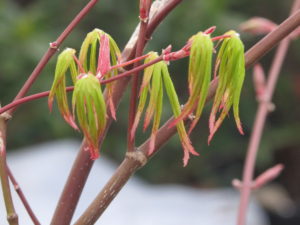More Quick Tips For Today’s Garden
Here are several more quick tips for the gardens in early spring. Several links have been provided, where you’ll find more details.
1. Fertilize Violas and Pansies
It’s no wonder these cold-hardy little biennials are seen all around town. They’re planted in median strips, at neighborhood entrances, around shopping centers, and in our gardens.
They live through the winter, delighting all of us with their colorful, cheerful appearance. Cold is what they like; in late spring or early summer, they will fail in the heat. This year, we had a very mild winter in zone 7b Charlotte, so they looked beautiful all season.
Quick tips: As long as they’re in active growth, fertilize every 6 or 8 weeks, even in the winter! Use fertilizer that has a higher percentage of phosphorus, the middle number on a package. A ratio of 1-2-1 or 1-3-1 will work. Those three numbers represent the percentages of nitrogen, phosphorus (phosphate), and potassium (potash) in the product. They are always listed in that order: N-P-K.
Keep in mind that violas and pansies need acidic soil. You can mix peat moss into the bed in preparation for planting, also incorporating pine fines (soil conditioner) to improve drainage. Or use a product (Soil Acidifier) that will lower the pH, if your soil tests on the high side. Soil that has been limed might be too alkaline for violas, which prefer a pH level around 5.5 to 6.0.
If you have a spare hour or so, deadhead (pinch off) the old faded flowers. Whether or not that actually helps promote bloom, it certainly will improve the appearance of the plants, especially for pansies.
2. Harvest Greens
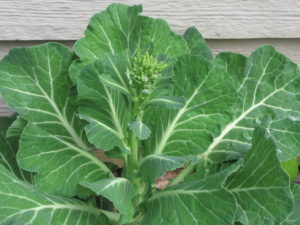
Collards, with flower bud.
Recently I cleaned the vegetable garden. I harvested most, but not all, of the greens that have been producing since last fall.
Later today or tomorrow, I will wash and sauté the greens down to “wilt”. Then they will be divided into portions and frozen in plastic zip lock bags. The next time I make soup from scratch (or from a can), a rice dish with rotisserie chicken, lasagna, or buy a store-bought pizza, one or two of those bags of greens will be added to the dish. That’s an easy way to add greens to a meal, and increase the nutritional content.
The two large clumps of collards will make a fabulous Collards Soup. For that, I use a large stockpot, which makes about a gallon of soup. I also freeze some of it in plastic containers for later use.

Chinese cabbage ‘Tokyo Bekana’.
In addition to the collards, I harvested mustard greens and dinosaur and ‘Red Russian’ kales. The light green Chinese cabbage ‘Tokyo Bekana’ will be added to the next salad. Swiss chard ‘Bright Lights’ remains in the garden, and should last until autumn if it’s partially shaded.
The vegetable garden next to the house is becoming increasingly shaded. The trees on the berm to the south have grown larger and wider over the past 5 years. At this point I’m seriously considering growing a couple of tomato plants in containers on the enclosed deck, safe from the deer.
The sweet pepper plant did well enough in the garden, so it will go there again this year. But most of that garden will contain a variety of greens, green onions, leeks, and probably a cucumber. It’s still the perfect place for fall and winter greens because it’s a warm microclimate, being right next to the house. And at that time, the trees are leafless, so there’s more sun.
The Beneficials
Quick tips: Several of the brassicas are in flower, so I left a few of them in the garden for the honey bees and the tiny braconid wasps. During late winter and early spring, few food sources are available for these beneficial insects, so I like to help when I can. And you can add some flowers to a salad or as a garnish.
3. Plant More Cool Season Greens and Vegetables
Broccoli ‘Happy Rich’ is ready! So I made a trip to the garden center a few days ago to pick up a few pots of this delicious miniature broccoli. Ordering seeds is just not feasible right now; I’d have lost 4 or 5 weeks of growing time, so I went for the quick fix: transplants!
Broccoli ‘Imperial’ is one of the varieties recommended for growing in the spring and late summer. This crop will be able to tolerate the warmth of the late spring season, when it will be harvested. I love broccoli. So many vitamins, minerals, phytonutrients…and protein too.
Carrot, radish, and beet seeds can be planted now, even before frost has retreated north. Pea seeds could have gone into the ground weeks ago, but the ones I planted in the fall made it through the winter, and are now flowering and making pea pods (photo, below).
As space opens up in the garden, I’ll sow seeds of mesclun, tatsoi, leeks, and maybe ‘Scarlet Frills’ mustard for its beautiful and fairly spicy foliage, adding some spark to salads!
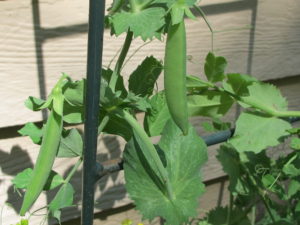
Fast growing edible-podded peas on a trellis.
Check with your local agricultural extension service for a chart describing what can be planted when. It wouldn’t be a bad idea to get a soil test, to remove doubt about the pH or which nutrients need to be added.
Lettuce
A few pots and market packs of lettuce purchased over the past week will supplement the patch of lettuce seedlings that survived the winter in the garden. Smaller plants will continue to grow after the mature heads have been harvested.
A red butterhead lettuce called ‘Skyphos’ is reliable even in warm temperatures, up to a point. It retains very good flavor when others turn bitter in the heat.
When trying to extend the lettuce harvest, look for varieties that tolerate high temperatures. Varieties listed for planting at this time include ‘Nancy’ (green butterhead), ‘Vulcan’ (red leaf), ‘Sparx’ (Romaine), ‘Muir’ and ‘Magenta’ (summer crisp), and ‘Skyphos’, of course, one of the favorites I’ve grown for years. The heirloom ‘Black Seeded Simpson’, a loose-leaf lettuce, and ‘Outredgeous’ Romaine are more options for a spring garden.
Quick tips: ‘Red Sails’ lettuce is too pretty to pass up, and it can grow well into spring. Leafy vegetables with deep green color and red pigments, the anthocyanins, have more antioxidants. These nutrients help us fight many illnesses, including cancer and inflammation. So, I always prefer richly colored varieties.
More Quick Tips: How To Grow Lettuce
Lettuce seed germinates readily at a soil temperature in the 60’s F. It will take longer, but seeds will even germinate at 45°. They won’t, however, do anything above 75° or so.
Lettuce appreciates very rich, moist soil. Fertilize every couple of weeks with high nitrogen fish emulsion, earthworm castings, or compost if the soil temperature has increased. And provide ground limestone for calcium and to raise the pH, which prevents tip burn. If a soil test indicates proper pH for greens, add gypsum instead, which also provides calcium but doesn’t change the pH. It’s best to deal with pH months ahead of planting crops.
Organic products rely on soil microbes to break them down and to make their nutrients available to plant roots. But, in winter, microbes are dormant, so I use a synthetic soluble fertilizer.
As the weather warms up, give lettuce morning sun, which is less harsh than hot afternoon sun. You can plant a quick crop between young tomato plants, in partial shade.
Watch out for slugs; scatter granules of organic Sluggo outside the lettuce bed, to draw them away from their intended meal. Slugs can transmit a form of meningitis when ingested, so… And aphids can be a problem, too, but you can just wash them away.
4. Pick the Parsley
This versatile herb gives fresh flavor to meat, fish, and poultry dishes, sauces, soups, potatoes, eggs, salads, sandwiches, garlic bread, mayonnaise, and herb butter.
The addition of vitamin- and mineral-rich parsley enhances just abut anything you cook. But add it late in the cooking process, in the last few minutes, as you would most leafy herbs. Cooked for a long time, the flavors will evaporate away.
Concerned about your breath? Chew on a couple of leaves; the chlorophyll will freshen it.
There are two main groups of parsley:
- flat-leaf, plain, or Italian (‘Giant of Italy’, a new improved sweeter ‘Peione’, and smaller ‘Titan’)
- curled leaf parsley (‘Favorit’, ‘Double moss curled’, ‘Paramount’), famous as a garnish and pretty as a garden edging, but also edible.
Decades ago, as a kid, I remember seeing my grandmother in her Englewood, New Jersey, kitchen, holding a huge bunch of flat-leaf parsley inside her arm. Nanny was the real thing—Sicilian-born and a great cook—so for those looking for real parsley flavor, go for the flat-leaf.
When I was growing up, my mother (Nanny’s daughter) always used curly parsley. Several years ago, I asked her why she used the curled and not the flat-leaf. She said the Italian parsley always tasted funny, so she preferred the curled. Do you know which other herb looks like flat-leaf parsley? That’s right…she must have bought cilantro! Neither of us likes this herb at all! So, if you’ve been reluctant to buy or grow flat-leaf parsley, see if its resemblance to cilantro might be the root of that problem.
Here’s good news: it’s easy to grow!
Parsley (Petroselinum crispum) is a biennial member of the Apiaceae family, a cousin of dill, cilantro, carrot, and fennel. Set young transplants into the garden in early spring, through the summer, and in the fall. Fertilize every few weeks with a high nitrogen product, such as fish emulsion. Parsley also is adaptable to growing in potted herb gardens.
In areas with moderately cold winters, it will tolerate freezing temperatures. The foliage will stay in better condition if it receives some protection from a warmer microclimate, such as next to a south-facing wall. Or grow it in a cold frame in colder climates.
Quick tips: Plant parsley in rich soil. Amended with compost or aged manure to a depth of 12″ or more, parsley will develop a large root system when grown in the ground. ‘Gigante’ (or ‘Giant of Italy’) grows into a massive mound of dark green leaves, 2′ tall and wider than that. In spring, the stems begin to grow tall, preparing for its blooming phase (photo, right).
This is parsley’s natural cycle of growth as a biennial. It’s seeded in one year, grows, overwinters once, and then flowers the next spring or early summer. Sometimes parsley goes to flower the first year if it was seeded very early.
Harvest the plant before it goes to flower, or when you notice that the stems are growing tall (photo, right). If you wait much longer than that, the sweet flavor will become strong or bitter. Cut the stem at soil level, and remove any yellow or pale green leaves.
Cut parsley stems will stay fresh for a few days in a glass of water on the counter or in the refrigerator.
Prepare the rest this way:
- Wash the parsley thoroughly in cool running water. Shake off as much water as you can, or put it through a salad spinner.
- Have a couple of 1- or 2-cup plastic containers handy.
- Remove thick stems. Cut and reserve the leaflets, and keep them intact.
- Transfer leaflets to the plastic containers, packing them in tightly.
- Freeze the containers.
- The next time you need some parsley for soup or tomato sauce or roasted vegetables, simply flake off the quantity you need. Chop them before adding to cooking.
- Simple! Although it doesn’t look like fresh parsley (it looks wilted), the flavor is better than the dried option. And it takes up less space than chopped parsley frozen in ice cubes.
Who’s eating all the parsley?
Deer and Rabbits
Does this sound familiar? The parsley is growing beautifully, it has great color, and it’s providing lots of clippings for the kitchen. All of a sudden, the leaves disappeared…overnight! Well, we’re not the only ones who are fond of parsley. Deer and rabbits like it, too. They can do a lot of damage in one sitting.
Quick tips: You can’t use chemical deer repellents, but you can construct a frame around the parsley plants. If you have a big old lamp shade with “ribs”, remove the fabric and replace it with bird (deer) netting. The bigger the shade, the better. Anchor it to the ground so it can’t be kicked over. Or fabricate something yourself from hardware cloth or chicken wire. Make sure young rabbits won’t be able to squeeze through the openings. The goal is to physically exclude animals from reaching the parsley, cilantro, and dill.
Black Swallowtail Butterfly Caterpillars
If the parsley looks smaller than it did last week, look for little caterpillars feeding on the leaves. The female black swallowtail lays tiny yellow eggs on plants in the Apiaceae family (parsley, cilantro, fennel, dill). She deposits them primarily on the bottoms of the leaves. They’re hard to spot, but once you’ve learned to recognize them, you can simply rub them off.
Quick tips: Look for young caterpillars a few days or a week later, in case you missed a few of the eggs. The young brown and white larvae look like bird droppings, appearing less appealing to predators. An organic approach is to spray with Bt (Bacillus thuringiensis), a naturally occurring bacterium. Bt causes caterpillars of moths and butterflies to stop feeding, and they’ll die a day or two later.
But I like butterflies!
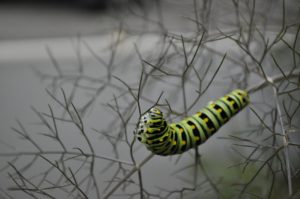
Black swallowtail larva on fennel.
Quick tips: Now, if you would rather keep the butterflies, as I do, simply transfer caterpillars from the parsley to a bronze fennel plant. Bronze fennel is a large growing and pretty perennial herb, and a food source for this insect. The fennel is edible for us as well, in salads or to garnish fish.
As the larvae grow, they turn into large black and green striped caterpillars (photo, right). These parsley worms, as they’re sometimes called, will consume more and more of the foliage. Not a problem for the vigorous bronze fennel, but a smaller parsley plant can disappear in a flash.
5. Weed!
Dandelions, chickweed, and hairy bittercress top the list of winter weeds around here. In untended fields, the bright yellow flowers of wintercress cover acres of ground, not unattractive at all!
Your local garden center can help with products that prevent weed seeds from germinating or that will kill weeds after they sprout. Don’t use them, though, near the edibles. Bring fresh samples with you. Diligent weeding and mulch are recommended.
Dandelion
- Tiny umbrellas (pappi, plural; pappus, singular) carry away the seeds in the slightest breeze.
Derived from the French “dent de lion”, dandelion refers to the toothed (dent) edges of the leaves. Bright yellow flowers dot the landscape from late winter on. If they are not killed or removed, each of those flowers will develop into a cluster of seeds. This method of seed dispersal, by the wind, is called anemochory.
Quick tips: This weed develops a taproot sometimes more than a foot deep. Leaving part of the taproot behind after “pulling” the weed will result in a new dandelion regrowing from the root. Either remove the entire root (there’s a tool for that), spot treat with a non-selective herbicide, or use a broadleaf weed killer. Always read the labels. Keep weed killers away from herbs and vegetables.
The dandelion in our lawns (Taraxacum officinale) looks similar to edible “dandelion greens”, in the species Cichorium intybus, a type of chicory.
Chickweed
Chickweed grows close to the ground, spreading about 1 1/2′ wide. Thick mats of this weed will hide among the lawn grasses, winter greens, and last year’s fallen leaves. Their seeds germinate in cool seasons, and the plants grow fast, lodging against walls and other objects that trap winter warmth.
If you pull the top, the roots have such a strong hold on the soil that the stem will stretch and break off. In a couple of weeks, you’ll have the pleasure of pulling it again. Grasp firmly under the crown of the plant, just below where the stem meets the soil, and make sure you get the roots.
Two species that often grow here in North Carolina are common chickweed and the more hairy mouse-ear chickweed.
Quick tips: Don’t wait as long as I did for this garden chore. Next winter, there will be an even bigger crop of chickweed. That’s not such a bad thing, though, because tender young greens are edible. Like many greens, common chickweed (Stellaria media) is very high in vitamins and minerals. One website claims it is fairly high in oxalic acid; for those with certain health conditions, check with your doctor. Add it to salads, soups, sandwiches, and stir-fries.
Hairy Bittercress
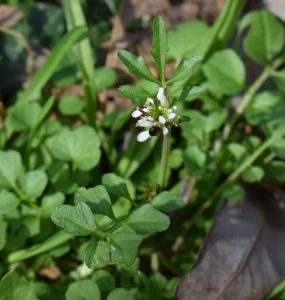
Hairy bittercress.
This species of cress (Cardamine hirsuta) is a short but abundant winter annual that grows a small rosette of edible bitter foliage, topped by a cluster of white flowers. It is related to broccoli and cabbage, in the Brassicaceae family. Disturbed seedpods open explosively, dispersing seeds in every direction. Ballochory is the name of this method of seed dispersal.
The “ounce of prevention is worth a pound of cure” axiom certainly holds true with weeds. Many times more weeds will grow in the next season if they are allowed to go to seed.
Not all of them will germinate, though. Seeds can remain viable for decades, patiently waiting underground for that moment when the soil is disturbed. Exposing the seed to favorable conditions, such as light, water, and the right temperature, is all they need to germinate.
6. Take a Moment to Just Enjoy Spring
There will always be more quick tips for the garden, but they can wait. Take the kids or the dog or yourself outside, listen to the sounds of nature, and just enjoy being!
